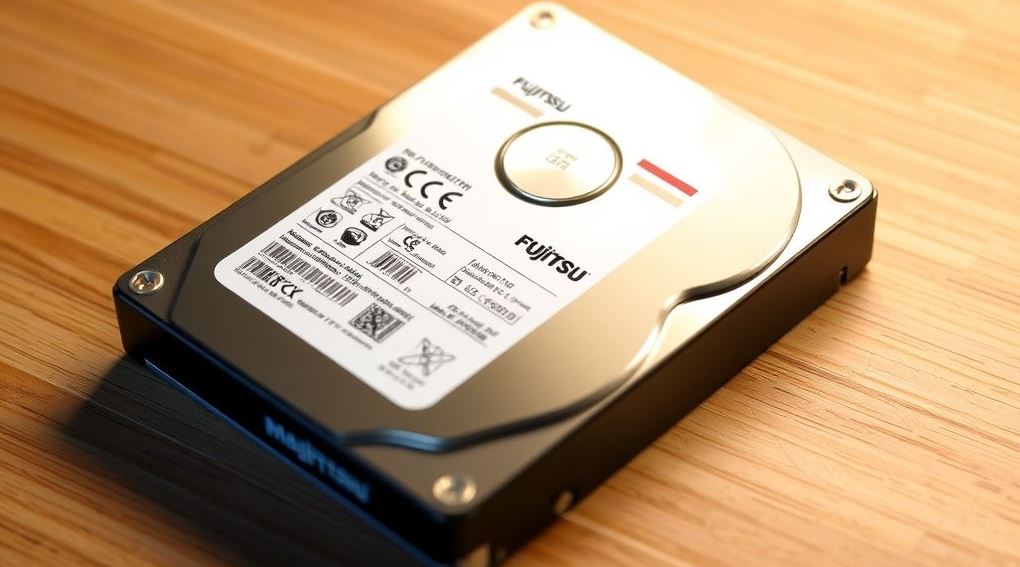In a world that gallops ever forward, there remains a curious breed of soul who looks backward with a glint of stubborn affection. To these folks, the hum of a spinning disk and the steady click of a vintage server are sweeter music than any modern solid-state silence. The Fujitsu MAP3367NP, a proud relic of SCSI-era engineering, belongs firmly to that older world. And yet, even relics can be coaxed into new life if only one knows how to make a Fujitsu MAP3367NP hook up to a USB port.

Fujitsu MAP3367NP Hook Up To USB Port
This is no trivial pursuit. You are not merely connecting one thing to another. You are building a bridge across decades, marrying yesterday’s technology with today’s convenience. And if that sounds like a fool’s errand, well, then you might just be the right kind of fool to attempt it.
What is the Fujitsu MAP3367NP and Why It Still Matters
Long before cloud drives floated above us like lazy summer clouds, storage was a physical affair solid, spinning, and stubborn. The Fujitsu MAP3367NP is a 36 GB 10,000 RPM SCSI hard drive, built for enterprise servers in the early 2000s. It was not meant to be plugged into your laptop like a thumb drive. It was meant to live its days deep inside a rack, tethered by thick cables and governed by SCSI controllers.
Yet for all its age, it holds certain charms. These drives are reliable, rugged, and surprisingly fast for their time. If you’ve salvaged one from an old server or discovered it in a forgotten drawer, you may find it still spins as faithfully as the day it was made. That’s why many enthusiasts and data archaeologists seek to hook up a Fujitsu MAP3367NP to a USB port to retrieve data, repurpose the drive, or simply breathe life back into a fine piece of engineering.
How to Make Fujitsu MAP3367NP Hook Up to USB Port on a Modern Computer
Here we find ourselves at the crux of the matter. Your Fujitsu MAP3367NP speaks a language called SCSI (Small Computer System Interface). Your modern machine speaks USB. They might as well be two old friends who’ve grown apart, neither understanding the slang of the other. To make them talk again, you’ll need an interpreter a SCSI-to-USB bridge.
Such an adapter is a rare creature nowadays. It’s not something you’ll find in the impulse-buy aisle at the electronics shop. More often than not, it must be hunted down from specialty suppliers or secondhand markets. Once acquired, the adapter serves as the middleman: the drive connects to it via a 68-pin SCSI cable, and the adapter in turn connects to your computer’s USB port.
It’s worth noting that power is not included in this diplomatic arrangement. The Fujitsu MAP3367NP is a hungry beast, requiring a stable 5V and 12V supply. Without proper power, the drive will spin no more than a lazy half-turn before falling silent. A dedicated SCSI power supply or an external enclosure designed for such drives is often the simplest solution.
Common Challenges When Making a Fujitsu MAP3367NP Hook Up to USB Port
Once all the wires are connected and the power humming, you may think the job done. Alas, the adventure is rarely so smooth. Modern operating systems, in their relentless pursuit of newness, sometimes greet old hardware with blank stares. Your system might not recognize the drive immediately. Drivers those quiet little programs that teach your computer new tricks may need to be installed manually.
Another obstacle lies in formatting. The Fujitsu MAP3367NP might still be formatted in an ancient file system from a long-decommissioned server. Your modern machine may see the drive but not the data upon it. In such cases, data recovery software or a dedicated SCSI utility might be required to coax the bits and bytes back into readable form.
And then there is the matter of speed. Even if you succeed in making the Fujitsu MAP3367NP hook up to a USB port, do not expect the swiftness of an SSD. The data will flow, but like a lazy river steady and patient. Yet in that patience there is a certain charm, a reminder of a time when computing was not about immediacy but endurance.
Preserving History Why the Effort is Worth It
Some might ask why anyone would go through such trouble for a mere 36 gigabytes of storage. In an era where terabytes come cheaply and petabytes lurk in the cloud, it’s a fair question. But those who tinker with old drives know that the value is not always in the capacity. It is in the connection not the USB one, but the human one.
Perhaps the Fujitsu MAP3367NP holds precious archives from a defunct company, logs of a forgotten project, or the digital diary of a younger self. Perhaps it’s simply a machine you loved once, and you cannot bear to let it go. By learning how to hook up the Fujitsu MAP3367NP to a USB port, you are not just retrieving data. You are resurrecting stories.
A Bridge Between Eras
In the end, this endeavor is more than a technical exercise. It is a small rebellion against obsolescence. The Fujitsu MAP3367NP, like a dusty old book in a library corner, still has wisdom to share if you are willing to listen. The process may require patience, adapters, power supplies, and perhaps a bit of cursing under your breath but when that disk spins and the data appears, you will feel the quiet satisfaction of a craftsman who has restored life to something once left for dead.
And in that moment, as the old SCSI drive hums beside a sleek modern laptop, you’ll know you’ve done more than just make a Fujitsu MAP3367NP hook up to a USB port. You’ve built a bridge between eras and walked across it.